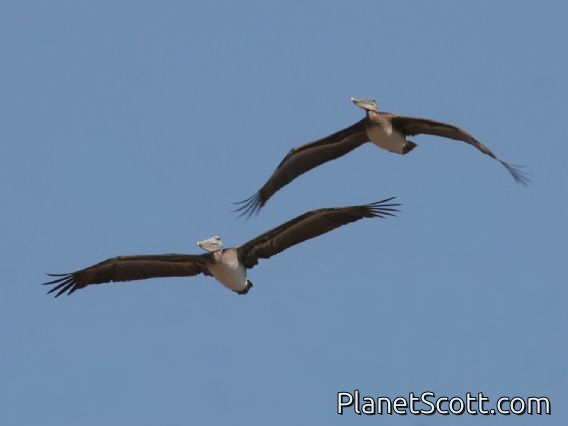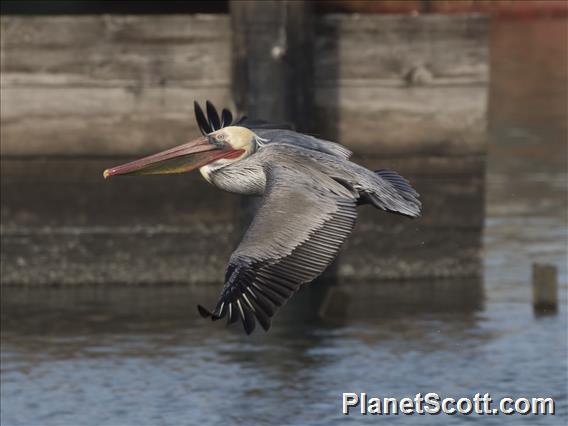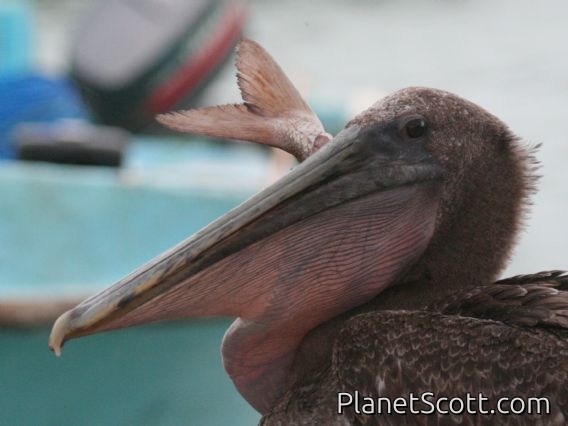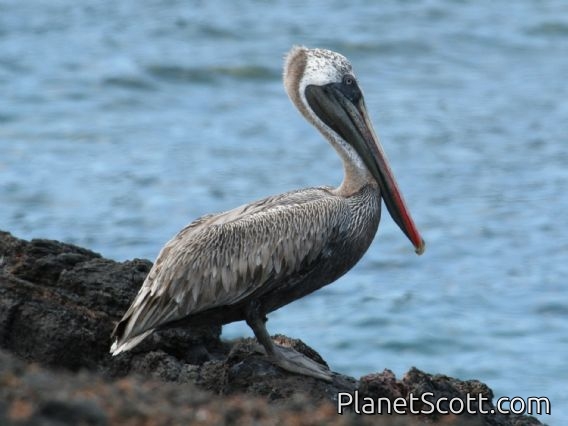Brown Pelican (Pelecanus occidentalis)












About Brown Pelican (Pelecanus occidentalis)
- Kingdom: Animals
- Phylum: Chordates
- Class: Birds
- Order: Pelicans
- Family: Pelicans
The brown pelican is a bird of the pelican family, Pelecanidae, one of three species found in the Americas and one of two that feed by diving into water. It is found on the Atlantic Coast from New Jersey to the mouth of the Amazon River, and along the Pacific Coast from British Columbia to Peru, including the Galapagos Islands. The nominate subspecies in its breeding plumage has a white head with a yellowish wash on the crown. The nape and neck are dark maroon–brown. The upper sides of the neck have white lines along the base of the gular pouch, and the lower fore neck has a pale yellowish patch. The male and female are similar, but the female is slightly smaller. The nonbreeding adult has a white head and neck. The pink skin around the eyes becomes dull and gray in the nonbreeding season. It lacks any red hue, and the pouch is strongly olivaceous ochre-tinged and the legs are olivaceous gray to blackish-gray.
Source: Wikipedia
Lifelists
Trips
Visits
-
2002-01-02
Isla Isabel, Mexico -
2004-04-20
Bahia de Los Angeles, Mexico -
2006-09-23
Don Edwards National Wildlife Refuge - Alviso, United States of America -
2006-11-28
Isla Baltra, Ecuador -
2006-12-11
Isla Santa Cruz - Puerto Ayora, Ecuador -
2007-01-01
Candlestick Park, United States of America -
2007-04-11
San Diego - La Jolla, United States of America -
2007-10-10
La Mancha, Mexico -
2008-01-04
Puerto Vallarta, Mexico -
2008-02-17
San Jose del Cabo - Estuary, Mexico -
2008-02-20
Isla Espiritu Santo, Mexico -
2009-01-14
Cozumel, Mexico -
2009-02-25
Corcovado National Park - La Sirena, Costa Rica -
2009-03-18
Mogue, Panama -
2009-08-15
Big River, United States of America -
2009-10-01
Crissy Field, United States of America -
2009-11-29
Heron's Head Park, United States of America -
2010-04-18
Point Reyes National Seashore, United States of America -
2010-05-17
Farallones Marine Sanctuary, United States of America -
2012-08-12
Coyote Point County Park--harbor and marsh, United States of America -
2012-09-19
Sutro Heights--Baths / Land's End, United States of America -
2012-09-22
East Wash, United States of America -
2012-09-23
Heron's Head Park, United States of America -
2012-12-13
Heron's Head Park, United States of America -
2013-03-23
Coyote Point County Park--harbor and marsh, United States of America -
2013-04-16
Aransas NWR (CTC 037) (Aransas Co.), United States of America -
2013-04-18
Galveston Island, United States of America -
2013-08-18
Farallones Marine Sanctuary, United States of America -
2013-09-13
Fort Mason, United States of America -
2014-01-01
Heron's Head Park, United States of America -
2014-01-11
Heron's Head Park, United States of America -
2014-01-25
Bahia de Semana, Dominican Republic -
2014-01-26
Los Haitises National Park, Dominican Republic -
2014-07-12
Ano Nuevo State Park, United States of America -
2014-09-01
Pigeon Pt., United States of America -
2014-09-20
East Wash, United States of America -
2014-11-18
Fort Funston, United States of America -
2014-12-07
Sutro Heights--Baths / Land's End, United States of America -
2014-12-21
Arrowhead Marsh, United States of America -
2014-12-26
Sutro Heights--Baths / Land's End, United States of America -
2014-12-27
Heron's Head Park, United States of America -
2015-01-01
Candlestick Park, United States of America -
2015-01-10
Half Moon Bay - Pillar Point, United States of America -
2015-01-20
Arrowhead Marsh, United States of America -
-
-
-
-
2015-12-30
Isla Verde, United States of America -
-
-
-
-
-
-
-
-
-
-
-
-
-
-
-
-
-
-
-
-
-
-
-
-
-
-
-
-
-
-
-
-
-
-
-
-
-
-
-
-
-
-
-
-
-
-
-
-
-
-
-
-
-
-
-
-
-







